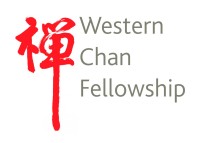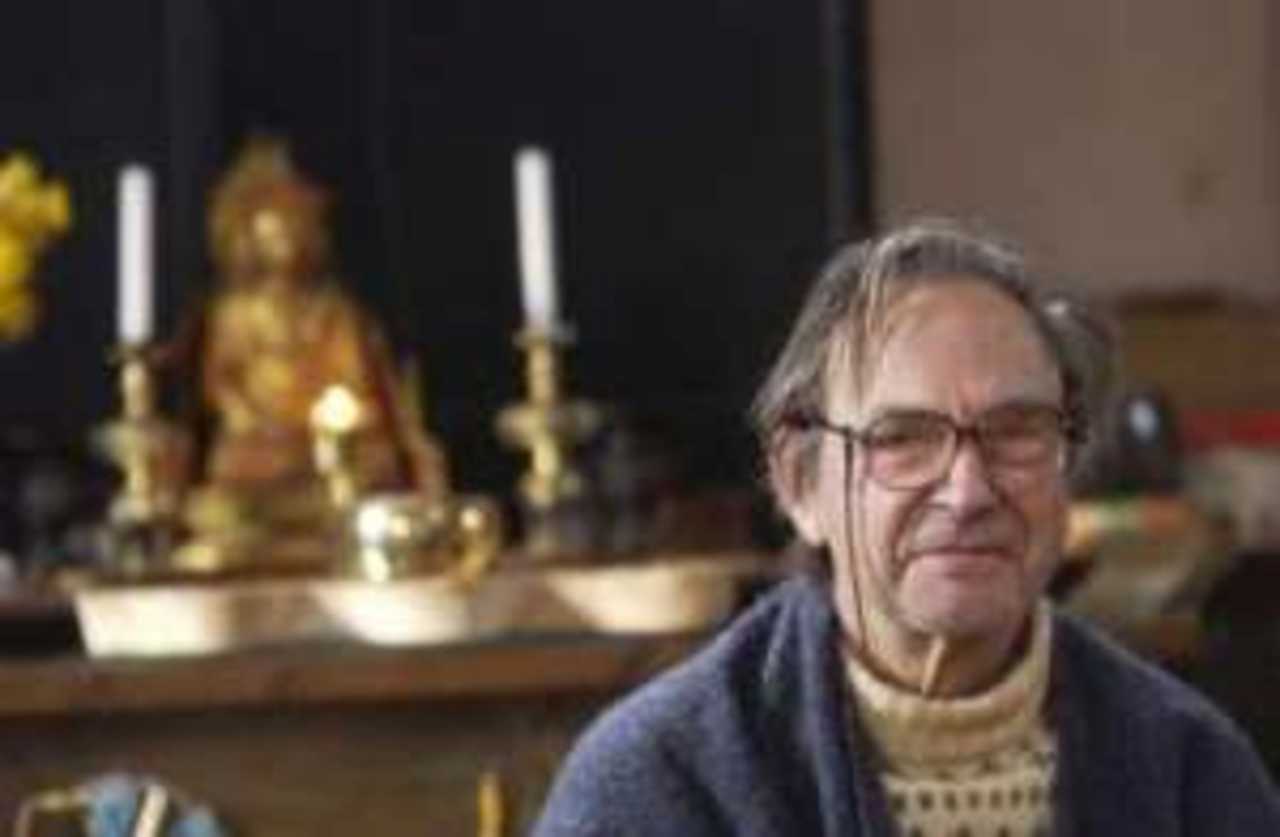The Meanings in the Flower
All of us probably know the story that founded Chan. Even so, lets retell it, briefly.
The Buddha was out walking with a bunch of monks. The monks were arguing about a number of questions such as "Does the Universe have a beginning. Yes or no?", "Does it have an end?", "Do Buddhas live for ever?"
The Buddha took no part in the discussion. Noticing this, Ananda said to him, "World Honoured one! Have you nothing to say about such important questions?"
The Buddha did not reply but instead bent down and picking a flower he held it up before the monks. They were bewildered – all except Mahakasyapa who smiled.
The Buddha must have smiled too for he gave Mahakasyapa the flower saying something like, "Here is the sign of your special transmission without dependence on words or letters and outside the scriptures". And Zen was born.
What is going on here? Why did not the Buddha participate? What was it that Mahakasyapa understood? Well, we were not there and cannot question them, yet reading the subsequent Chan teachings and the Mahayana philosophy upon which they are based gives us some clues.
There are two aspects to this. Mahakasyapa had a vivid experiential insight. It was a psychological event. Something happened. But Mahakasyapa also intuited the Buddha’s meaning. His understanding rested upon the Buddha’s own talks that had introduced his insights to his first followers. These initial discoveries were the Law of Co-dependent Arising and the Four Noble Truths that followed from the Law. These indeed are the roots of Mahayana thought throughout Asia.
What’s the story then? The Buddha saw that there could be no answer to these questions because there was simply no way of finding out what was the case in any of them. .It was rather that some monks would have the opinion that “Yes the Universe has a beginning” and others would say “No, it does not - it has always been”. Opinions without conclusive evidence go nowhere except into argument and quarrelling Such muddles follow from this Yes-No ‘dualism’, which is a constant cause of trouble in the world. You can think up our own dilemmas. Is there a God? What kind of God? Whose God is right? Is there life after death? What happened before the Big Bang? And so on.
The Buddha knew that such questions arise from seeing the Universe, the World, God or Life and Death as ‘things’ with their own separate existence from one another. The apparent ‘thingness’ of nouns in language suggests this. For example, I exist and therefore must be a thing. If my body dies, do I continue? We can’t know but often we invents solutions involving further abstractions - such as ‘soul’ or ‘heaven’ or the ‘Absolute’. These abstractions are merely linguistic .We cannot actually find them, see them or examine them in any empirical sense. They are inferences from dualistic arguments. Since the Buddha understood this, he knew he could not say either yes or no to any such questions? Is there a way through?
The Buddha saw every apparent thing in the Universe as co-dependent. Nothing had separate ‘inherent’ existence by itself. Nor was anything founded on nothing. There always was a context of conditions giving rise to some thing to which we give a name. This is Buddha’s view of non-dualism, ‘advaita’ in Sanskrit . Things certainly exist but not as independent ‘things’ with their own properties – rather they are representations within a process of interdependence.
Think of your ‘self’. You depend on air, water, food. Without these and the organs that acquire them you could not exist . Likewise your idea of your ‘self’ comes from inferring that something must be the basis of you being here. This is what John, Simon. Jane ,Peter are. The idea emerges from our growth as beings from babyhood in a culture that names things and their actions. They are all expressions of a process. No thing in itself exists independently; yet it is there.
So he picks the flower. The flower represents soil, water, seed growth , colour attractive to bees, pollen and the fact that the Buddha happened to see it as response to the monks confused dilemmas. So, hey, here it is. Here is something we call a flower. Here it is in its suchness (tathata) arisen from hosts of determining conditions but not a thing in any way separate in itself as a ’thing’ with private powers. It is empty ( sunya) of all that.
Mahakasyapa must have heard the Buddha’s discourses many times and he saw that the Buddha was presenting them in one momentary symbol.In experiencing that insight he had no need for words. He simply grasped the import of the Buddha’s symbol. It answered the monk’s questions at the level underlying them. The Buddha’s flower was expressing the nature of the universe as a process immediately present to the senses in each moment. Thus it is!
Such an experience can be ‘enlightening’ providing an instant clarity of how things are. It is the ‘being present in the presence of the present’; the flower as the universe – now. Yet time as we usually see it is likewise an illusion. The past no longer is, the future is only in the imagination and you cannot find now because it is always a goner. Yet, here we are – endlessly moving on together with everything else. How wonderful! And so he smiled. The Buddha, seeing his smile told him yes- you’ve got it.Soon it will be your turn to convey this to others.
This story is the first of many Koans and Hua-tous. “What is the sound of one hand clapping?” Without dependency no sound, no clap. “I am not it yet it is all of me” I am not the universe but I am totally in process with it. “What is this?” This and only THIS is this now. “Where do these wonders exist?” Where indeed? What ‘where’ are we talking about here?
All the great Mahayana philosophers argued from these points. The insight is very simple yet the philosophers go into great subtlety not necessary for the beginning practitioner. The insight comes when the mind has been calmed and the attachment to this 'thing' called me dissolves. In a flowing oneness of co-dependency, the unity of all is apparent without words and for a long time the practitioner can do without them.
Yet, if we stop here some may think. "That’s all very well but what’s the significance of this wordy account?" The important message to practitioners is that Mahakasyapa saw the meanings in the flower instantaneously. He was not thinking about it. What was this insight?
Such moments occur when the mind drops both ego and the attachments of the ego; the hassling mind worrying about ‘things’, possessions, credentials, life and death and becomes aware of the oneness of all momentary experience in the flowing presence of the Universe as a whole. There it is – a total intuited presence, a feeling of oneness and wonder. In our Western Chan, we call this clarity or tranquillity, Self at Ease. It is a moment when, as Honzhi puts it,
"Silently and serenely, one forgets all words. Clearly and vividly, it appears before you. When one realises it, time has no limits. When experiencing it, your surroundings come to life."
Here the 'it' remains unstated, mysterious, a word that stands in for an essentially wordless wonder. This is all the practitioner need know and the words of the philosophers merely thresh out the meanings within it. Yet, that is not all. When one turns again to look at the world, one sees the huge amount of distress and suffering all self-related dualistic thought produces. The wonder turns to empathy for those who suffer, compassion. And one begins to move towards helping others as best one can. As Shifu puts it, the ego transforms into wisdom.
If you want to tell others about it all, then you need the skill of appropriate language. The Koans are the stories that undo the stories of our illusions. Where does this undoing happen?
Chuan-deng Jing-di
Wednesday, November 10, 2010
- Publication date:
- Modified date:
- Categories: 2023 2010 John Crook New Chan Forum 64
-
 Western Chan Fellowship CIO
Western Chan Fellowship CIO - Link to this page
Back

©Western Chan Fellowship CIO 1997-2025. May not be quoted for commercial purposes. Anyone wishing to quote for non-commercial purposes may seek permission from the WCF Secretary.
The articles on this website have been submitted by various authors. The views expressed do not necessarily represent the views of the Western Chan Fellowship.
Permalink: https://w-c-f.org/Q372-85



